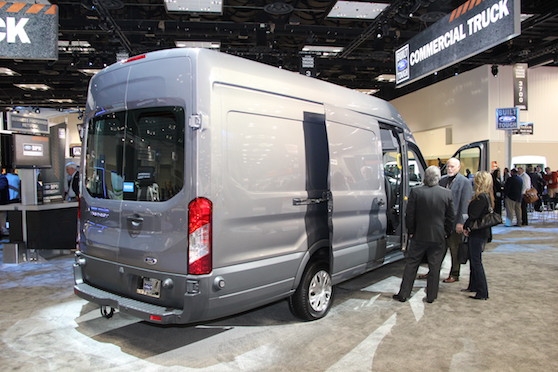
Features
Articles
Preparing efficient vocational truck specifications
February 26, 2018 | By Christopher Lyon
 Produced annually by NTEA, The Work Truck Show is a great venue for exploring the latest vocational truck and equipment displays, with product experts available every- where. ALL PhotoS A. Capkun, 2013.
Produced annually by NTEA, The Work Truck Show is a great venue for exploring the latest vocational truck and equipment displays, with product experts available every- where. ALL PhotoS A. Capkun, 2013. February 26, 2018 — Vocational vehicle specifications serve as building blocks for a fleet and provide financial responsibility for the end product. As work trucks become more complex, mistakes are inevitable. However, a well-written spec can be invaluable when determining who is responsible for correcting errors and, ultimately, monetarily accountable.
Efficient specs can lower an organization’s overall acquisition and life cycle costs. They help eliminate guesswork, enabling companies to provide customers with the envisioned end product. Poorly done specifications often result in time-consuming, expensive rework. Avoiding this can allow vendors to reduce financial liability when responding to purchase solicitations which, in turn, potentially leads to cost reductions.
How it’s written makes a difference
Effective communication is critical for ensuring well-written specs and providing the best value for capital spent. There are several types of specs (listed below), and understanding key differences between them can be critical when it comes to final product and price.
Generic specs are written to allow multiple vendors and suppliers to comply without making unreasonable changes to their standard products. This can be a useful format for truck equipment when used in competitive bid situations.
Proprietary specs incorporate features unique to a certain make or model, and are written around a specific unit to the exclusion of others. Advantages to using this type of spec include obtaining a product only available from a sole source or, when the spec is written around the idea of standardization, can include multiple vendors. It is important to use valid selection criteria — proprietary specs are ineffective when utilized to incorporate unique features for a specific make or model to give advantages to potential vendors during a competitive bid process.
Predatory specs are written to artificially disqualify a single vendor or make them take unacceptable exceptions to specifications. These are not considered an effective practice and should be avoided.
Four common types of specifications can be written:
• Engineered
• Functional
• Performance
• Hybrid
Engineered specs include the most detail and require a high level of engineering expertise. The writer assumes a significant amount of liability for the final product, but has complete control over it. In most cases, these are used for extremely specialized, customized offerings, often resulting in the most-expensive end product with long production times.
Functional specs describe intended equipment usage but provide minimal guidance for actual design. While easy to write, these specs rely on vendors to interpret requirements and final product applications. They leave little control over design and make it difficult to standardize components on a global level.
Performance specs are similar to functional, but incorporate specific requirements for the completed unit (e.g. crane lifting capacity or maximum operating vehicle speed). They are easy to write and provide vendors with significant flexibility; however, there is less control over final design and standardization.
Hybrid (a.k.a. composite) specs combine the best features of engineered, functional and performance. The writer can fully define all requirements as well as incorporate standard components without being excessively restrictive to vendors.
Don’t rely on the past
Some fleet managers stick with what has worked previously, and won’t go beyond manufacturer changes from model year to model year. While this might sound like a concrete idea, it can become a slippery slope and result in outdated and inefficient operations.
Take a step back and consider your current equipment functionality. Is the equipment that’s being replaced the most efficient for the task? Have job requirements shifted over time? Change can bring opportunities to increase efficiency, so it’s important to overcome the mindset of replacing equipment with comparable items.
Beginning the process
Several steps are necessary for writing effective specifications, starting with defining the application. Don’t make decisions based on what everyone else is doing or assume past needs equal current. Look at your operating
environment and drive and duty cycles, and identify valid functional requirements, such as payload and dimensional considerations. Define performance conditions like road speed and gradability, and outline design constraints such as operating environments, overall weight, vehicle dimensions and other regulatory barriers.
It is critical to design second units (such as body and auxiliary equipment) before the chassis. Avoid the pitfall of buying a chassis and making it work. Once all of the details are finalized, then design the chassis and write the spec.
Christopher Lyon is director of Fleet Relations with the National Truck Equipment Association. Established in 1964, NTEA represents more than 1950 companies that manufacture, distribute, install, sell and repair commercial trucks, truck bodies, truck equipment, trailers and accessories. Buyers of work trucks and the major commercial truck chassis manufacturers also belong to the association. Visit ntea.com.
This article originally appeared in the February 2018 issue of Electrical Business Magazine.
Print this page